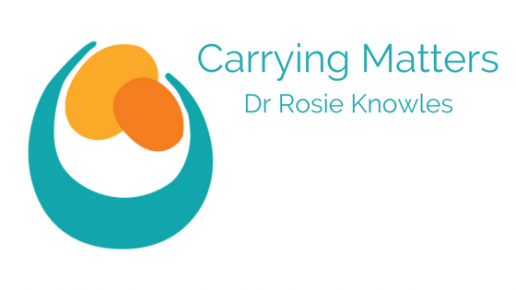Health Care Professional (PT/OT) peer supporter training online section
12th May 2022
|By Rosie Knowles
Health Care Professional focused online sling and carrier safety and theory course.
| Module 1 | Welcome to the Carrying Matters PT/OT babywearing peer supporter course | |
|---|---|---|
| Unit 1 | Structure of the Online Course (for HCP (PT/OT) trainees | |
| Module 2 | Why Carrying Matters | |
| Unit 1 | The anthropology/history of babywearing | |
| Unit 2 | Why Carrying Matters section | |
| Unit 3 | Carrying and contact is what matters | |
| Unit 4 | Brain Development Studies - Effects of Optimal Brain Development | |
| Unit 5 | Brain Development Studies - The Lack of Positive Support | |
| Unit 6 | Brain Development Studies - How Slings Can Support Optimal Brain Development | |
| Unit 7 | The Importance of Soft Touch and Movement - The Role of Soft Touch | |
| Unit 8 | The Importance of Soft Touch and Movement - The Role of Movement | |
| Unit 9 | Managing and reducing stressful experiences | |
| Unit 10 | Therapeutic benefits of sling and carrier use for children with extra needs | |
| Unit 11 | General Positive Effects of Babywearing for Children | |
| Unit 12 | Positive Effects of Carrying for Caregivers | |
| Unit 13 | Positive Effects of Close Contact for the Wider Society | |
| Unit 14 | Barriers to Babywearing in a healthcare setting | |
| Module 3 | Introduction to Basic Babywearing Safety | |
| Unit 1 | Keeping babies safe in slings | |
| Unit 2 | Basic Anatomy - Why do we need to know about airway safety with babywearing? | |
| Unit 3 | Basic Anatomy - The shape of baby's body - the spine | |
| Unit 4 | Basic Anatomy - The shape of baby's body - airway | |
| Unit 5 | Preventing airway compromise while babywearing - The importance of positioning | |
| Unit 6 | Preventing airway compromise while babywearing - The importance of a good fit | |
| Unit 7 | Babywearing in changing circumstances - Responding to changes | |
| Unit 8 | Babywearing in changing circumstances - Babywearing while asleep/awake | |
| Unit 9 | Babywearing in changing circumstances - Safe infant feeding while babywearing | |
| Unit 10 | Babywearing in changing circumstances - Managing changes of temperature | |
| Unit 11 | Babywearing in changing circumstances - Changes as baby grows older and stronger | |
| Unit 12 | Babywearing in changing circumstances - Babywearing on the move | |
| Unit 13 | Completing the introduction to babywearing safety section - Quiz | |
| Unit 14 | Providing help to families with extra needs | |
| Module 4 | The Role of the Peer Supporter/Consultant | |
| Unit 1 | The babywearing peer supporter role | |
| Module 5 | The Different Types of Slings | |
| Unit 1 | Overview of the main types of carrier | |
| Unit 2 | Stretchy Wraps and their Variations - Introduction to Stretchy Wraps | |
| Unit 3 | Stretchy Wraps and their Variations - How To Use Stretchy Wraps | |
| Unit 4 | Stretchy Wraps and their Variations - Troubleshooting Stretchy Wraps | |
| Unit 5 | Stretchy Wraps and their Variations - the Close Caboo | |
| Unit 6 | Stretchy Wraps and their Variations - Kangaroo Care Tops | |
| Unit 7 | Types of Slings - Introduction to Woven Wraps | |
| Unit 8 | Types of Slings - How to Use Woven Wraps | |
| Unit 9 | Types of Slings - Troubleshooting Woven Wraps | |
| Unit 10 | Types of Slings - Introduction to Buckle Carriers | |
| Unit 11 | Types of Slings - How to Use Buckle Carriers | |
| Unit 12 | Types of Slings - Troubleshooting Buckle Carriers | |
| Unit 13 | Types of Slings - Introduction to Meh Dais | |
| Unit 14 | Types of Slings - How to use Meh Dais, and troubleshooting | |
| Unit 15 | Types of Slings - Improving the fit and comfort of sub-optimal carriers | |
| Module 6 | Carrying in Special Circumstances | |
| Unit 1 | Special Circumstances | |
| Unit 2 | So, what next? | |
| Module 7 | Assessment of Understanding | |
| Unit 1 | Assessment of Understanding at end of online PS course | |
| Unit 2 | Feedback | |
| Unit 3 | Completion of the Course |
Powered By WP Courseware

